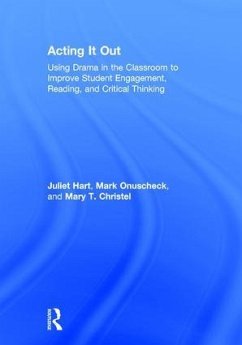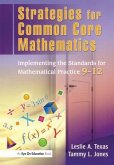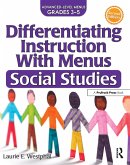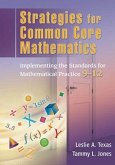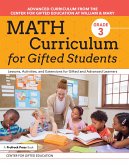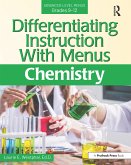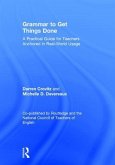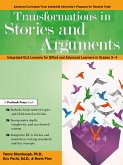Juliet Hart, Mark Onuscheck, Mary T Christel
Acting It Out
Using Drama in the Classroom to Improve Student Engagement, Reading, and Critical Thinking
Juliet Hart, Mark Onuscheck, Mary T Christel
Acting It Out
Using Drama in the Classroom to Improve Student Engagement, Reading, and Critical Thinking
- Gebundenes Buch
- Merkliste
- Auf die Merkliste
- Bewerten Bewerten
- Teilen
- Produkt teilen
- Produkterinnerung
- Produkterinnerung
In Acting It Out, you'll discover how to use drama in your ELA and social studies classrooms to boost student participation and foster critical thinking.
Andere Kunden interessierten sich auch für
![Strategies for Common Core Mathematics Strategies for Common Core Mathematics]() Leslie TexasStrategies for Common Core Mathematics152,99 €
Leslie TexasStrategies for Common Core Mathematics152,99 €![Differentiating Instruction with Menus Differentiating Instruction with Menus]() Laurie E WestphalDifferentiating Instruction with Menus29,99 €
Laurie E WestphalDifferentiating Instruction with Menus29,99 €![Strategies for Common Core Mathematics Strategies for Common Core Mathematics]() Leslie TexasStrategies for Common Core Mathematics38,99 €
Leslie TexasStrategies for Common Core Mathematics38,99 €![Math Curriculum for Gifted Students Math Curriculum for Gifted Students]() Centre for Gifted EducationMath Curriculum for Gifted Students38,99 €
Centre for Gifted EducationMath Curriculum for Gifted Students38,99 €![Differentiating Instruction with Menus Differentiating Instruction with Menus]() Laurie E WestphalDifferentiating Instruction with Menus28,99 €
Laurie E WestphalDifferentiating Instruction with Menus28,99 €![Grammar to Get Things Done Grammar to Get Things Done]() Darren CrovitzGrammar to Get Things Done136,99 €
Darren CrovitzGrammar to Get Things Done136,99 €![Transformations in Stories and Arguments Transformations in Stories and Arguments]() Tamra StambaughTransformations in Stories and Arguments48,99 €
Tamra StambaughTransformations in Stories and Arguments48,99 €-
-
-
In Acting It Out, you'll discover how to use drama in your ELA and social studies classrooms to boost student participation and foster critical thinking.
Hinweis: Dieser Artikel kann nur an eine deutsche Lieferadresse ausgeliefert werden.
Hinweis: Dieser Artikel kann nur an eine deutsche Lieferadresse ausgeliefert werden.
Produktdetails
- Produktdetails
- Verlag: Taylor & Francis Ltd (Sales)
- Seitenzahl: 140
- Erscheinungstermin: 29. September 2016
- Englisch
- Abmessung: 254mm x 178mm x 10mm
- Gewicht: 467g
- ISBN-13: 9781138677432
- ISBN-10: 1138677434
- Artikelnr.: 57039428
- Verlag: Taylor & Francis Ltd (Sales)
- Seitenzahl: 140
- Erscheinungstermin: 29. September 2016
- Englisch
- Abmessung: 254mm x 178mm x 10mm
- Gewicht: 467g
- ISBN-13: 9781138677432
- ISBN-10: 1138677434
- Artikelnr.: 57039428
Juliet Hart is the Director of Education at TimeLine Theatre Company. She has presented workshops on active approaches to drama in the classroom for the Illinois Association of Teachers of English and National Council of Teachers of English (NCTE). Mark Onuscheck is the Director of Curriculum, Instruction and Assessment at Adlai E. Stevenson High School. He also serves as an adjunct professor at DePaul University. Mary T. Christel is a former teacher of world literature, media and film studies, and theater. Currently, she contributes teaching resources to TimeLine Theatre's Living History Program and also reviews prospective lesson plans for the ReadWriteThink website.
Contents
Meet the Authors
Acknowledgements
Chapter 1: Bringing Dramatic Literature to Life Through An Active Approach
What Does "Acting It Out" Really Involve?
Offering A Bit of Context: TimeLine Theatre Company and Chicago Public
Schools Partnership
Not Just in Drama Class: Using Active Approaches in Any Classroom
Opportunity for Reflection
Chapter 2: Engaging Students: The Key Ingredient
Make the Connection: Engagement and Standards for Learning
Empowering Learners: Long Term Outcomes
Opportunity for Reflection
Chapter 3: Opening Up the Classroom Actor's Toolkit: Promoting Student
Engagement
How to Build an Ensemble
Introducing Classroom Actor Basics
Sharing Energy and Building Trust
Making Body and Voice Connections
Creating A New Approach to Bell Ringers and Redirection Strategies
Beyond Bell Ringer Ensemble Building Activities: Exploring a Monologue
Activity #6: Group Monologue Work
Fostering "Buy In" and A Classroom that "Connects"
Opportunity for Reflection
Chapter 4: The Play's the Thing: To Read or Not To Read Dramatic Literature
Why Read a Play?
Act One: Start by Addressing Accessible Literary Themes
Act Two: Build Critical Thinking Around Social Issues
Act Three: Create and Recreate Historical Perspective
Opportunity for Reflection
Chapter 5: Acting It Out: Applying Active Approaches to Scene Study
Introducing the Play
Selecting Scenes and Monologues
Starting the Rehearsal Process
More Body and Character Connections
Casting the Scenes, Creating Rehearsal Groups
Starting with a "Table Read"
The Reader-Feeder Approach
Moving with a Purpose: Blocking the Scene
Showing Scenes
Assessment: What Are My Students Learning? How Do They Want to
Grow?
Building Confidence, Fostering Success
Opportunity for Reflection
Handout: Self-Assessment: My Personal Goals
Handout: Formative Assessment: Checklist for Meeting Rehearsal Objectives
Rubric: Summative Assessment of Scene Showing
Chapter 6: Discovering the World of the Play: Researching Complementary
Nonfiction, Primary Sources, and Visual Texts
What is a Dramaturg?
Teacher as Dramaturg: Providing Students with Complementary Non-fiction
Texts
Students as Dramaturgs: Researching the World of the Play
Seeing the World of the Play Through Visual Media Research
The Play's "Backstory": Creating a Dramaturgical Packet
Step into the Play's World: Creating a "Lobby Display" for the Classroom
Opportunity for Reflection
Handout: Brainstorming to Set a Research Agenda
Chapter 7: It's All Connected: Making Interdisciplinary Connections through
Dramatic Texts
Why Interdisciplinary Connections through Dramatic Texts?
Excerpting a Play, Capturing a Crucial Moment in History
Use History Plays Like Time Machines
More Specifically: Unpack Social Issues
Use Plays to Establish a Different Viewpoint on Segregation
Use Plays to Gain a Different Viewpoint on Prejudice
Use Plays to Study the Role of Harassment in Culture
Use Plays to Expose the Stories of Internment and Genocide
Opportunity for Reflection
Chapter 8: Measuring Growth: Activities for Exploration, Reflection, and
Assessment
Setting the Stage for Exploration: Previewing the Play, Its Issues, and
Themes
Character Development Activities for Deeper Exploration and as Formative
Assessment Tools
Capstone Writing Activities
Bringing It All Together
Opportunity for Reflection
Handout: Character Dossier
Handout: Coat of Arms Template
Appendix A: Lesson Plans
Appendix B: Recommended Plays
Appendix C: Recommended Resources
References
Meet the Authors
Acknowledgements
Chapter 1: Bringing Dramatic Literature to Life Through An Active Approach
What Does "Acting It Out" Really Involve?
Offering A Bit of Context: TimeLine Theatre Company and Chicago Public
Schools Partnership
Not Just in Drama Class: Using Active Approaches in Any Classroom
Opportunity for Reflection
Chapter 2: Engaging Students: The Key Ingredient
Make the Connection: Engagement and Standards for Learning
Empowering Learners: Long Term Outcomes
Opportunity for Reflection
Chapter 3: Opening Up the Classroom Actor's Toolkit: Promoting Student
Engagement
How to Build an Ensemble
Introducing Classroom Actor Basics
Sharing Energy and Building Trust
Making Body and Voice Connections
Creating A New Approach to Bell Ringers and Redirection Strategies
Beyond Bell Ringer Ensemble Building Activities: Exploring a Monologue
Activity #6: Group Monologue Work
Fostering "Buy In" and A Classroom that "Connects"
Opportunity for Reflection
Chapter 4: The Play's the Thing: To Read or Not To Read Dramatic Literature
Why Read a Play?
Act One: Start by Addressing Accessible Literary Themes
Act Two: Build Critical Thinking Around Social Issues
Act Three: Create and Recreate Historical Perspective
Opportunity for Reflection
Chapter 5: Acting It Out: Applying Active Approaches to Scene Study
Introducing the Play
Selecting Scenes and Monologues
Starting the Rehearsal Process
More Body and Character Connections
Casting the Scenes, Creating Rehearsal Groups
Starting with a "Table Read"
The Reader-Feeder Approach
Moving with a Purpose: Blocking the Scene
Showing Scenes
Assessment: What Are My Students Learning? How Do They Want to
Grow?
Building Confidence, Fostering Success
Opportunity for Reflection
Handout: Self-Assessment: My Personal Goals
Handout: Formative Assessment: Checklist for Meeting Rehearsal Objectives
Rubric: Summative Assessment of Scene Showing
Chapter 6: Discovering the World of the Play: Researching Complementary
Nonfiction, Primary Sources, and Visual Texts
What is a Dramaturg?
Teacher as Dramaturg: Providing Students with Complementary Non-fiction
Texts
Students as Dramaturgs: Researching the World of the Play
Seeing the World of the Play Through Visual Media Research
The Play's "Backstory": Creating a Dramaturgical Packet
Step into the Play's World: Creating a "Lobby Display" for the Classroom
Opportunity for Reflection
Handout: Brainstorming to Set a Research Agenda
Chapter 7: It's All Connected: Making Interdisciplinary Connections through
Dramatic Texts
Why Interdisciplinary Connections through Dramatic Texts?
Excerpting a Play, Capturing a Crucial Moment in History
Use History Plays Like Time Machines
More Specifically: Unpack Social Issues
Use Plays to Establish a Different Viewpoint on Segregation
Use Plays to Gain a Different Viewpoint on Prejudice
Use Plays to Study the Role of Harassment in Culture
Use Plays to Expose the Stories of Internment and Genocide
Opportunity for Reflection
Chapter 8: Measuring Growth: Activities for Exploration, Reflection, and
Assessment
Setting the Stage for Exploration: Previewing the Play, Its Issues, and
Themes
Character Development Activities for Deeper Exploration and as Formative
Assessment Tools
Capstone Writing Activities
Bringing It All Together
Opportunity for Reflection
Handout: Character Dossier
Handout: Coat of Arms Template
Appendix A: Lesson Plans
Appendix B: Recommended Plays
Appendix C: Recommended Resources
References
Contents
Meet the Authors
Acknowledgements
Chapter 1: Bringing Dramatic Literature to Life Through An Active Approach
What Does "Acting It Out" Really Involve?
Offering A Bit of Context: TimeLine Theatre Company and Chicago Public
Schools Partnership
Not Just in Drama Class: Using Active Approaches in Any Classroom
Opportunity for Reflection
Chapter 2: Engaging Students: The Key Ingredient
Make the Connection: Engagement and Standards for Learning
Empowering Learners: Long Term Outcomes
Opportunity for Reflection
Chapter 3: Opening Up the Classroom Actor's Toolkit: Promoting Student
Engagement
How to Build an Ensemble
Introducing Classroom Actor Basics
Sharing Energy and Building Trust
Making Body and Voice Connections
Creating A New Approach to Bell Ringers and Redirection Strategies
Beyond Bell Ringer Ensemble Building Activities: Exploring a Monologue
Activity #6: Group Monologue Work
Fostering "Buy In" and A Classroom that "Connects"
Opportunity for Reflection
Chapter 4: The Play's the Thing: To Read or Not To Read Dramatic Literature
Why Read a Play?
Act One: Start by Addressing Accessible Literary Themes
Act Two: Build Critical Thinking Around Social Issues
Act Three: Create and Recreate Historical Perspective
Opportunity for Reflection
Chapter 5: Acting It Out: Applying Active Approaches to Scene Study
Introducing the Play
Selecting Scenes and Monologues
Starting the Rehearsal Process
More Body and Character Connections
Casting the Scenes, Creating Rehearsal Groups
Starting with a "Table Read"
The Reader-Feeder Approach
Moving with a Purpose: Blocking the Scene
Showing Scenes
Assessment: What Are My Students Learning? How Do They Want to
Grow?
Building Confidence, Fostering Success
Opportunity for Reflection
Handout: Self-Assessment: My Personal Goals
Handout: Formative Assessment: Checklist for Meeting Rehearsal Objectives
Rubric: Summative Assessment of Scene Showing
Chapter 6: Discovering the World of the Play: Researching Complementary
Nonfiction, Primary Sources, and Visual Texts
What is a Dramaturg?
Teacher as Dramaturg: Providing Students with Complementary Non-fiction
Texts
Students as Dramaturgs: Researching the World of the Play
Seeing the World of the Play Through Visual Media Research
The Play's "Backstory": Creating a Dramaturgical Packet
Step into the Play's World: Creating a "Lobby Display" for the Classroom
Opportunity for Reflection
Handout: Brainstorming to Set a Research Agenda
Chapter 7: It's All Connected: Making Interdisciplinary Connections through
Dramatic Texts
Why Interdisciplinary Connections through Dramatic Texts?
Excerpting a Play, Capturing a Crucial Moment in History
Use History Plays Like Time Machines
More Specifically: Unpack Social Issues
Use Plays to Establish a Different Viewpoint on Segregation
Use Plays to Gain a Different Viewpoint on Prejudice
Use Plays to Study the Role of Harassment in Culture
Use Plays to Expose the Stories of Internment and Genocide
Opportunity for Reflection
Chapter 8: Measuring Growth: Activities for Exploration, Reflection, and
Assessment
Setting the Stage for Exploration: Previewing the Play, Its Issues, and
Themes
Character Development Activities for Deeper Exploration and as Formative
Assessment Tools
Capstone Writing Activities
Bringing It All Together
Opportunity for Reflection
Handout: Character Dossier
Handout: Coat of Arms Template
Appendix A: Lesson Plans
Appendix B: Recommended Plays
Appendix C: Recommended Resources
References
Meet the Authors
Acknowledgements
Chapter 1: Bringing Dramatic Literature to Life Through An Active Approach
What Does "Acting It Out" Really Involve?
Offering A Bit of Context: TimeLine Theatre Company and Chicago Public
Schools Partnership
Not Just in Drama Class: Using Active Approaches in Any Classroom
Opportunity for Reflection
Chapter 2: Engaging Students: The Key Ingredient
Make the Connection: Engagement and Standards for Learning
Empowering Learners: Long Term Outcomes
Opportunity for Reflection
Chapter 3: Opening Up the Classroom Actor's Toolkit: Promoting Student
Engagement
How to Build an Ensemble
Introducing Classroom Actor Basics
Sharing Energy and Building Trust
Making Body and Voice Connections
Creating A New Approach to Bell Ringers and Redirection Strategies
Beyond Bell Ringer Ensemble Building Activities: Exploring a Monologue
Activity #6: Group Monologue Work
Fostering "Buy In" and A Classroom that "Connects"
Opportunity for Reflection
Chapter 4: The Play's the Thing: To Read or Not To Read Dramatic Literature
Why Read a Play?
Act One: Start by Addressing Accessible Literary Themes
Act Two: Build Critical Thinking Around Social Issues
Act Three: Create and Recreate Historical Perspective
Opportunity for Reflection
Chapter 5: Acting It Out: Applying Active Approaches to Scene Study
Introducing the Play
Selecting Scenes and Monologues
Starting the Rehearsal Process
More Body and Character Connections
Casting the Scenes, Creating Rehearsal Groups
Starting with a "Table Read"
The Reader-Feeder Approach
Moving with a Purpose: Blocking the Scene
Showing Scenes
Assessment: What Are My Students Learning? How Do They Want to
Grow?
Building Confidence, Fostering Success
Opportunity for Reflection
Handout: Self-Assessment: My Personal Goals
Handout: Formative Assessment: Checklist for Meeting Rehearsal Objectives
Rubric: Summative Assessment of Scene Showing
Chapter 6: Discovering the World of the Play: Researching Complementary
Nonfiction, Primary Sources, and Visual Texts
What is a Dramaturg?
Teacher as Dramaturg: Providing Students with Complementary Non-fiction
Texts
Students as Dramaturgs: Researching the World of the Play
Seeing the World of the Play Through Visual Media Research
The Play's "Backstory": Creating a Dramaturgical Packet
Step into the Play's World: Creating a "Lobby Display" for the Classroom
Opportunity for Reflection
Handout: Brainstorming to Set a Research Agenda
Chapter 7: It's All Connected: Making Interdisciplinary Connections through
Dramatic Texts
Why Interdisciplinary Connections through Dramatic Texts?
Excerpting a Play, Capturing a Crucial Moment in History
Use History Plays Like Time Machines
More Specifically: Unpack Social Issues
Use Plays to Establish a Different Viewpoint on Segregation
Use Plays to Gain a Different Viewpoint on Prejudice
Use Plays to Study the Role of Harassment in Culture
Use Plays to Expose the Stories of Internment and Genocide
Opportunity for Reflection
Chapter 8: Measuring Growth: Activities for Exploration, Reflection, and
Assessment
Setting the Stage for Exploration: Previewing the Play, Its Issues, and
Themes
Character Development Activities for Deeper Exploration and as Formative
Assessment Tools
Capstone Writing Activities
Bringing It All Together
Opportunity for Reflection
Handout: Character Dossier
Handout: Coat of Arms Template
Appendix A: Lesson Plans
Appendix B: Recommended Plays
Appendix C: Recommended Resources
References
